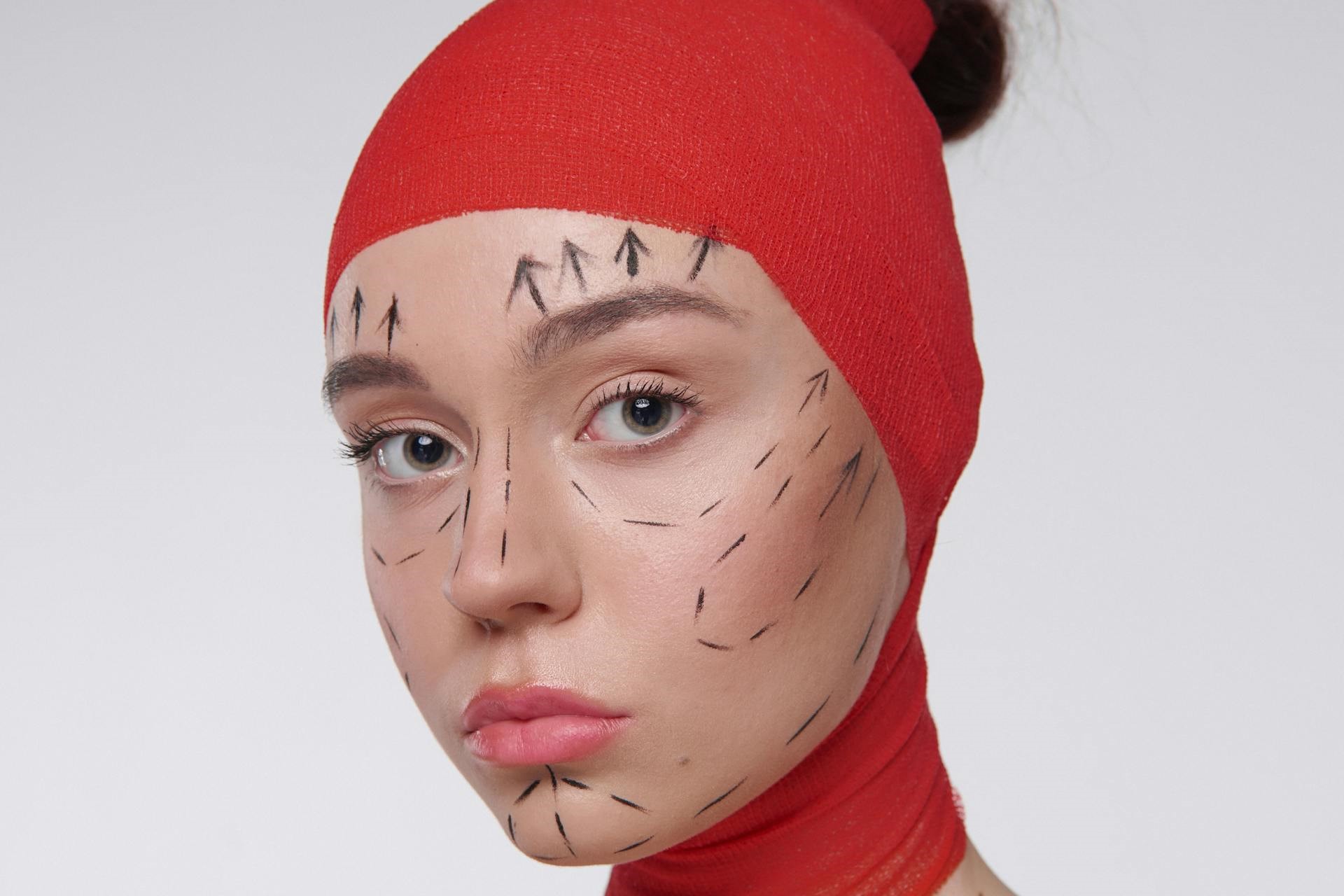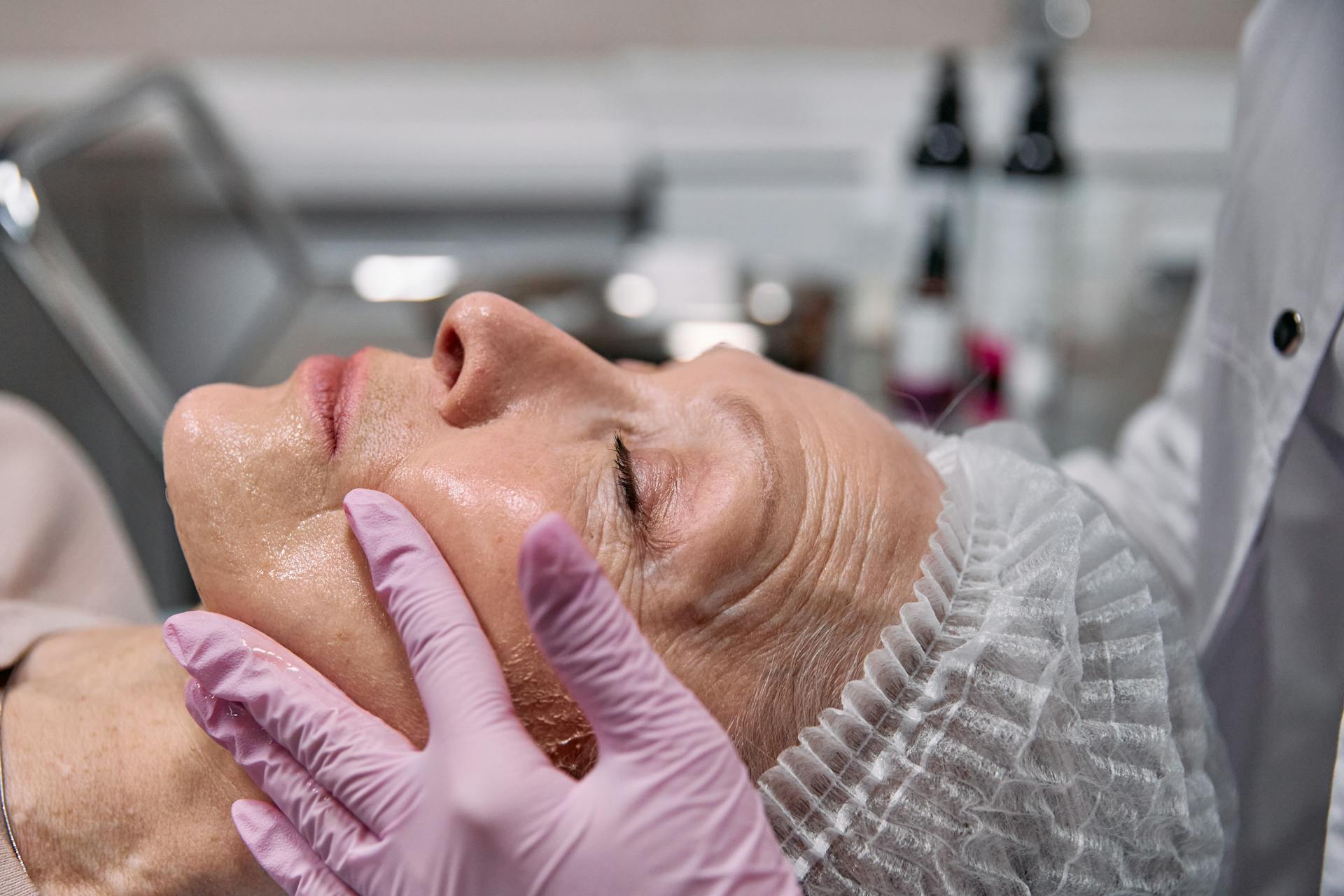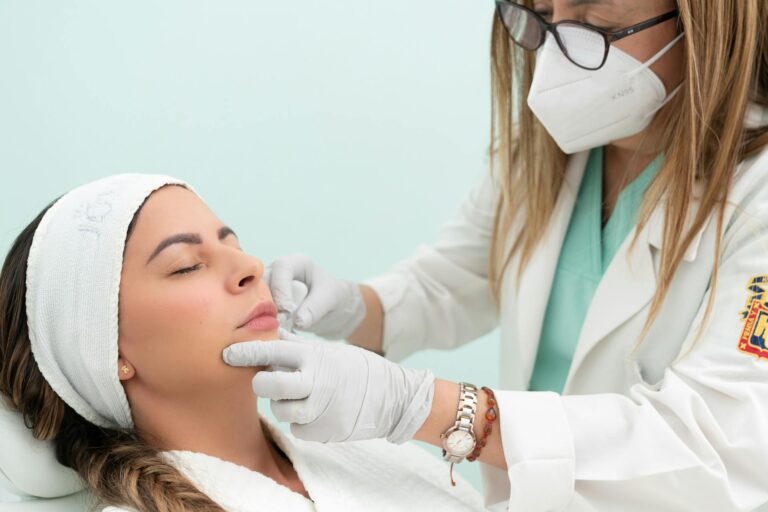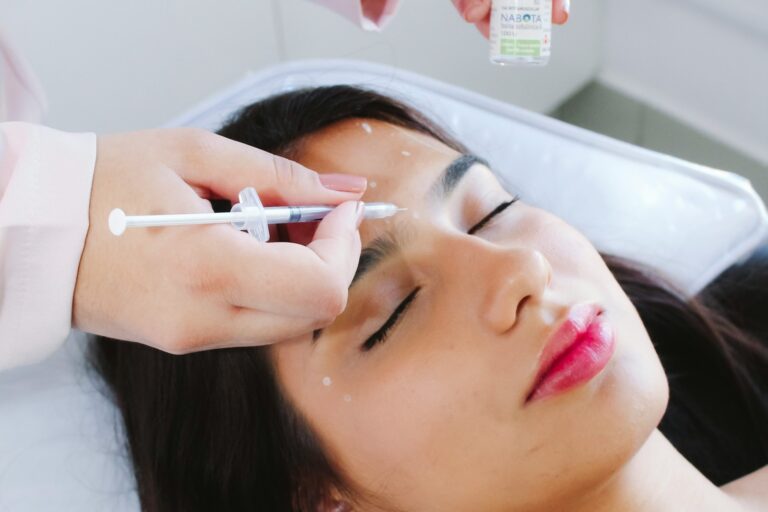
As individuals age, wrinkles often become a prevalent concern, leading many to pursue effective solutions. Botox, a well-known cosmetic treatment, presents an opportunity to smooth out fine lines and rejuvenate one’s appearance.
This guide delves into the origins of Botox, its mechanism of action, the benefits it offers, and what one can anticipate during the treatment process. Additionally, it provides information on how Botox smooths wrinkles and on how to find a qualified provider in the UK, ensuring safe and satisfactory results.
Whether one is contemplating Botox for the first time or seeking to enhance their understanding of the treatment, this comprehensive guide will serve as a valuable resource.
Understanding Botox and Wrinkles

Understanding Botox and its role in wrinkle reduction is essential for patients in the UK who are seeking effective anti-ageing solutions. Botox is a widely recognised cosmetic treatment that aims to smooth fine lines and crow’s feet, helping individuals achieve a more youthful appearance by temporarily relaxing facial muscles.
As part of the larger field of dermatology, this injectable procedure has gained considerable popularity among those looking to enhance their facial aesthetics while addressing the natural changes in skin quality and elasticity that come with ageing.
During consultations with medical professionals, patients can receive personalised treatment plans tailored to their specific aesthetic goals.
What is Botox?
Botox is a widely recognised non-invasive cosmetic procedure that originates from botulinum toxin, a neurotoxin that temporarily blocks nerve signals to muscles, resulting in muscle relaxation.
This impressive treatment has its roots in medical research aimed at addressing various muscular disorders. Since its initial applications in the medical field, Botox has gained widespread popularity in aesthetic medicine, with the cost of Botox in the UK reflecting its effectiveness and versatility.
Its mechanism of action involves inhibiting the release of acetylcholine at the neuromuscular junction, preventing muscle contractions that lead to the formation of dynamic wrinkles. Approved by the MHRA in 2002 for cosmetic use, Botox stands apart from other injectables, such as dermal fillers, which primarily focus on adding volume, by specifically targeting muscle activity.
The ability of Botox to smooth out frown lines and crow’s feet has made it a trusted choice for individuals seeking a youthful appearance through a non-surgical, minimally invasive treatment.
What Causes Wrinkles?
Wrinkles are a natural aspect of skin ageing, influenced by a variety of factors, including the depletion of collagen and hyaluronic acid, exposure to environmental stressors, and individual lifestyle choices.
As the body ages, the production of collagen—a crucial protein that provides structure and elasticity to the skin—begins to decline significantly. This reduction in collagen, combined with decreasing levels of hyaluronic acid, which aids in moisture retention, results in the skin losing its plumpness and resilience.
Various environmental factors, such as sun exposure, pollution, and smoking, can further accelerate this ageing process, leading to premature wrinkles. Additionally, lifestyle choices, including dietary habits, hydration levels, and stress management, play a vital role. Emotional stress not only affects hormonal balance but can also exacerbate skin conditions.
Understanding these interconnected factors is essential for anyone looking to maintain youthful skin and promote overall well-being.
How Does Botox Work on Wrinkles?
Botox addresses wrinkles by inducing muscle relaxation, which effectively smooths out facial lines and enhances the overall appearance of the skin.
This treatment uses a purified form of botulinum toxin. When injected into specific facial muscles, it temporarily paralyses those muscles, preventing them from contracting. As a result, the skin above appears softer and wrinkles diminish. Patients can generally expect to see noticeable improvements within a few days, with results lasting several months.
Achieving optimal aesthetic results relies heavily on the expertise of the practitioner. A skilled injector understands facial anatomy and can tailor treatments to meet individual needs. This thoughtful approach ensures that patients achieve a natural-looking appearance without sacrificing their unique expressions.
The Science Behind Botox

The science behind Botox lies in its proven effectiveness as a treatment for reducing wrinkles and improving facial aesthetics.
Numerous clinical studies have demonstrated both its safety and its efficacy, providing strong support for its use in cosmetic procedures.
How is Botox Made?
Botox is created through a detailed manufacturing process that involves the cultivation of the bacterium Clostridium botulinum, which is then purified to produce a neurotoxin that is both safe and effective for injectable use.
The journey begins in controlled laboratory settings where specific strains of the bacterium are carefully nurtured. Once these strains are cultivated, the neurotoxin is extracted and undergoes a thorough purification process to remove any impurities. This step is crucial, as it ensures that the final product is not only potent but also safe for patients.
Following purification, rigorous quality control measures are implemented to confirm that each batch complies with safety standards and regulatory requirements. The U.S. Food and Drug Administration (FDA) has approved Botox, validating its efficacy and safety for a range of medical and cosmetic uses.
This approval greatly enhances patient confidence, reassuring them that licensed practitioners utilise a product that has been thoroughly vetted and deemed safe for use.
How Does Botox Affect Muscles?
Botox works by affecting the muscles through the blocking of acetylcholine, a neurotransmitter responsible for muscle contraction. This process leads to temporary relaxation in the areas of the face Botox is applied.
This physiological change is particularly effective in reducing the appearance of fine lines and wrinkles, as the treated muscles are unable to contract as forcefully. As a result, the skin above these muscles becomes smoother, creating a more youthful and refreshed look.
However, alongside these aesthetic benefits, there are important safety considerations to keep in mind. It is crucial to understand the potential effects and limitations of Botox before undergoing treatment. Individuals contemplating this procedure should prioritise consultations with qualified professionals who can discuss the desired outcomes, risks, and how long the effects are expected to last.
By making informed decisions, patients can enhance their satisfaction with the results.
What are the Side Effects of Botox?
While Botox is generally regarded as safe, it is important for patients to be aware of potential side effects, including bruising, swelling, and, in rare cases, muscle weakness.
Although these side effects are often mild and temporary, they can still influence a patient’s overall experience, which underscores the importance of understanding what to expect after treatment. Education is vital in this process; being informed allows patients to make confident decisions and manage their expectations more effectively.
Additionally, it is beneficial for individuals to engage in open communication with their healthcare provider regarding any concerns they may have.
To reduce risks and promote a smoother recovery, adhering to pre- and post-treatment guidelines, such as avoiding strenuous exercise and exposure to heat, can contribute to improved satisfaction and outcomes.
Who Can Benefit from Botox?

Botox can be beneficial for a diverse group of individuals, especially those interested in facial rejuvenation and effective wrinkle reduction. This is true regardless of age or skin type, provided they meet certain treatment criteria.
What Age is Appropriate for Botox Treatment?
Whilst there isn’t a strict age limit for Botox treatment, many individuals tend to consider this cosmetic option in their late 20s to early 30s, seeking early intervention to combat the signs of skin ageing.
As people transition into their 40s and 50s, Botox treatments often become more prevalent, aiding in the reduction of deeper lines and wrinkles that may have developed over the years.
It’s important to recognise that each person’s experience with Botox is unique, shaped by factors such as skin type, lifestyle choices, and individual aesthetic goals. Therefore, the frequency of treatments can vary significantly; some may opt for touch-ups every three to four months, whilst others might prefer a less regular schedule.
This highlights the importance of consulting with a qualified medical professional. They can develop a personalised treatment plan that aligns with your specific goals and concerns, ensuring optimal and safe results.
Are There Any Restrictions for Botox Treatment?
Certain restrictions may apply to Botox treatment, including contraindications such as pregnancy, specific medical conditions, or allergies to the ingredients in the neurotoxin.
Clients considering Botox should recognise that a thorough skin analysis is vital in assessing their suitability for the procedure. Factors such as previous facial surgeries, skin infections, or underlying neurological disorders can significantly influence the decision to proceed with treatment.
Thus, a detailed consultation with trained medical professionals is essential to ensure both safety and effectiveness. Prospective candidates must provide their complete medical history and disclose any ongoing medications to minimise the risk of adverse reactions and to enhance the overall results of the Botox treatment.
What to Expect During and After Botox Treatment

During and after Botox treatment, patients can expect a procedure that is relatively quick and involves minimal downtime, making it easy to incorporate into their daily routines.
However, it is important for them to be aware of post-treatment care guidelines to ensure they achieve the best possible results.
How Long Does Botox Treatment Take?
The duration of Botox treatment typically takes about 10 to 15 minutes, making it an appealing choice for those seeking quick cosmetic enhancements.
However, the overall duration and effectiveness of the treatment can vary significantly based on several key factors. For example, individuals choosing to treat multiple areas may find that their sessions extend beyond the average time, as each area requires careful attention and precision.
The expertise of the practitioner is also crucial; a skilled injector can streamline the process, ensuring that the procedure is both efficient and effective. Patients often value how these factors contribute to their overall experience, influencing both their satisfaction and the results they achieve.
Is Botox Treatment Painful?
Most patients typically report experiencing minimal discomfort during Botox injections, often describing the sensation as a slight pinch, primarily due to the use of ultra-fine needles.
It is completely natural to have concerns regarding any potential pain related to the procedure. To facilitate a positive treatment experience, practitioners often implement various pain management strategies.
These strategies may include applying ice packs before the injections, which help numb the area and reduce sensitivity. Additionally, some practitioners might offer topical anaesthetics or soothing creams to further alleviate any discomfort.
By placing a strong emphasis on patient comfort, healthcare professionals aim to make the Botox experience as smooth and stress-free as possible. This approach allows individuals to concentrate on the positive results they can achieve through this widely sought-after cosmetic procedure.
What Are the Results of Botox Treatment?
The results of Botox treatment are usually noticeable within a few days, with optimal effects typically observed around two weeks after the injection. This timeline can lead to a significant visual impact in reducing wrinkles.
It is essential to recognise that the timeline for results can vary considerably from one patient to another. Some individuals may experience a quicker onset of effects, while others might find that the full results take a bit longer to become apparent.
Several factors can influence the effectiveness of the treatment for each person, including skin type, age, and the specific areas being treated. Generally, patient satisfaction remains quite high, as many individuals appreciate the smooth, youthful appearance that Botox can achieve.
To achieve the desired outcome, it is advisable to monitor progress and have open discussions regarding expectations with a qualified professional.
How Long Do Botox Results Last?
Botox results typically last between three and six months, and this duration can vary based on individual factors such as metabolism, age, and the specific areas being treated.
For many individuals, especially those who are younger or have a slower metabolism, the effects may tend to last longer, whereas others—particularly those who are highly active or possess certain skin types—might notice their results fading more quickly.
The longevity of Botox can also be influenced by the areas being treated. For example, regions such as the forehead may require more frequent touch-ups compared to other areas. Understanding these dynamics is essential for anyone considering Botox treatment.
Patients in their 30s to 50s often seek these enhancements, but the need for maintenance treatments can vary widely. Regular follow-ups are important not only for sustaining the desired appearance but also for optimising the results based on an individual’s changing needs and lifestyle.
Finding a Qualified Botox Provider in the UK

It is important to find a qualified Botox provider in the UK to ensure both safety and optimal treatment results.
The expertise of the practitioner significantly influences the overall patient experience, making this choice a critical one.
What Qualifications Should a Botox Provider Have?
A qualified Botox provider should possess the necessary medical qualifications, which include being a registered medical professional with specialised training in the administration of injectables.
Furthermore, it is essential for the provider to engage in ongoing education to remain informed about the latest techniques and safety standards related to cosmetic procedures. This dedication ensures that they can deliver the highest quality of care while effectively minimising any risks associated with the treatment.
A thorough understanding of facial anatomy and aesthetics is crucial for achieving natural-looking results that meet patients’ expectations. Therefore, individuals seeking treatment should look for practitioners who not only demonstrate proficiency but also maintain a strong commitment to patient satisfaction, as these elements greatly enhance the overall treatment experience.
How to Choose the Right Botox Provider?
Selecting the right Botox provider requires careful consideration of their experience, the reputation of their clinic, and their ability to offer a personalised consultation that aligns with your aesthetic goals.
Start by exploring online reviews to gather insights from previous patients regarding their experiences and satisfaction levels. Additionally, it may be helpful to consult friends or family for recommendations, as personal referrals can often lead to reliable choices.
After compiling a shortlist, schedule consultations with potential providers to inquire about their qualifications, techniques, and what outcomes you can expect.
During these meetings, take note of the clinic’s atmosphere and the professionalism of the staff, as these elements play a significant role in your overall comfort and confidence in their services.
Ultimately, a thoughtful selection process can help ensure a positive Botox experience tailored to your individual needs.
Frequently Asked Questions : How Botox Smooths Wrinkles
What is Botox and how does it work to smooth wrinkles?
Botox is a brand name for a type of neurotoxin called botulinum toxin. When injected into the muscles, it blocks the nerve signals that cause muscle contractions, leading to a temporary paralysis of the targeted muscles. This results in a smoother appearance of wrinkles.
How is Botox different from other wrinkle-smoothing treatments?
Botox works by targeting the underlying cause of wrinkles – muscle contractions. Other treatments, such as dermal fillers, work by adding volume to the skin. Botox is also less invasive and has a shorter recovery time compared to surgical procedures.
Is Botox safe for use in the UK?
Yes, Botox is safe for use in the UK. It has been approved by the Medicines and Healthcare products Regulatory Agency (MHRA) for use in treating wrinkles and has been used for cosmetic purposes for many years.
How long do the effects of Botox last?
The effects of Botox typically last for 3-4 months. However, this can vary depending on factors such as the dosage, individual metabolism, and the area being treated. It is recommended to have touch-up treatments every 3-6 months to maintain the results.
Are there any side effects of Botox?
As with any medical treatment, there may be some potential side effects of Botox, such as bruising, redness, or swelling at the injection site. These are usually mild and temporary. More serious side effects are rare but may include headaches, drooping eyelids, or difficulty swallowing. It is important to choose a qualified and experienced practitioner to minimise the risk of side effects.
Can anyone get Botox for wrinkles in the UK?
Most people who are in good health and over the age of 18 can receive Botox treatments for wrinkles. However, it may not be suitable for pregnant or breastfeeding women, those with certain medical conditions, or individuals taking certain medications. It is important to consult with a doctor or qualified practitioner to determine if Botox is the right treatment for you.






